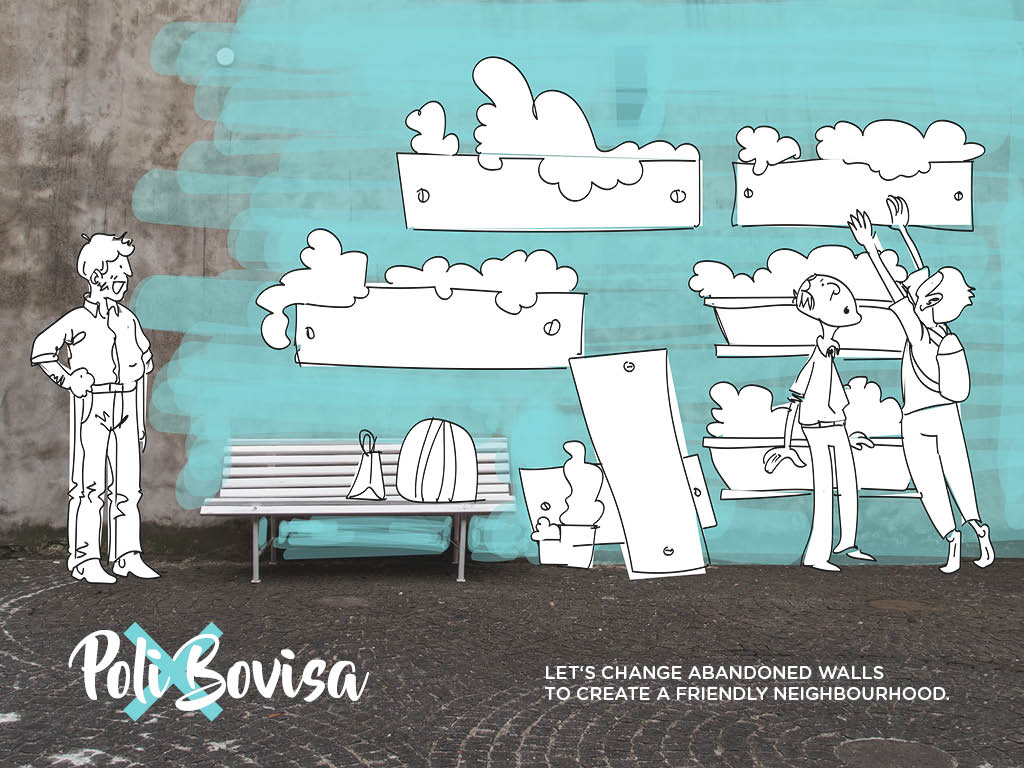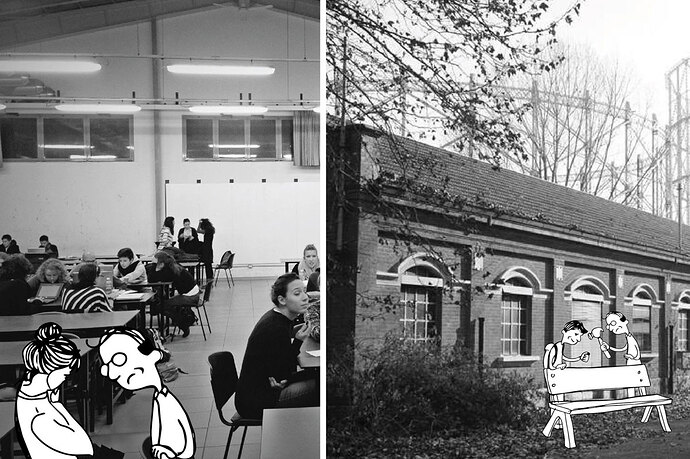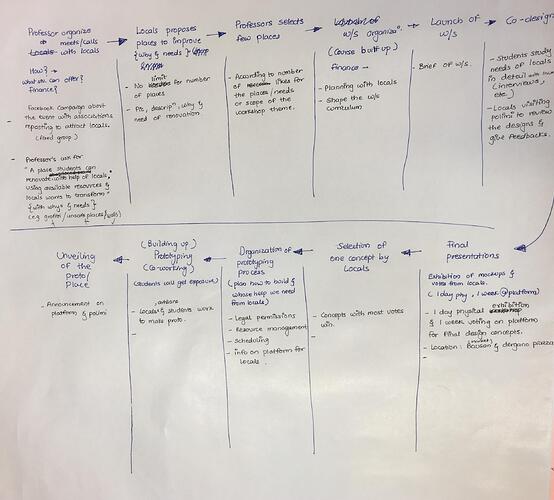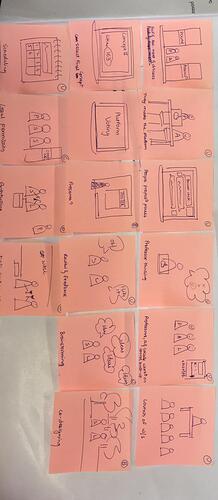Hi EdgeRyders community!
We are a group of students from Politcecnico di Milano. Our story was started with the intent to share the process of one of our latest projects.
The project is about engaging the inhabitatants of the Bovisa neighbourhood, Milano with the students of Politecnico to improve the environment they happily share.
Hope this project interests you. If some of our work sparked some ideas in you, please don’t hesitate to share them!
Cheers!
Our process
The brief for the project was: improve the communication between the students of Politecnico di Milano and the people of the Bovisa neighbourhood.
So our first step was to start drawing ideas and defining the needs of the two target groups. We looked into what the two groups can offer to each other and how possibly they can meet each other’s needs.
We were stuck for a moment with the creation of ideas and identifying needs (it happens! :)). Therefore we needed a new approach so we decided to use the ‘How to …?’ to trigger our creativity again. Here was the outcome:
After the ‘How to …’ questions we mapped out the different needs of the stakeholders and how they are co-realted.
After that we identified the three main needs of the people of the neighbourhood and students.
After the identifying the main needs we started coming up with ideas that can possibly answer one or more needs at once.
We voted on what we thought was the best idea: the idea with best potential of benefit for our target group and of course feasibility. In the end we choose one main idea and we drew inspiration from other two.
Hope you enjoyed our process. Next comes our finalized idea.
Final Idea
Here is the ‘formal description’ and the visualization we created.
'Connection between people and the space they live in plays a huge role in the development of any area. We noticed that in Bovisa this connection is lost as people are not willing to go outside and streets seem absolutely empty and dangerous in the evening.
As Bovisa was industrial area in the past, people feel that they live in the place they are not supposed to live. That’s why our goal is to change the atmosphere in the area and as a result it’s perception by locals.
We consider collaboration between students and locals as the strong tool to achieve this goal. Our concept starts with the platform where locals communicate their needs to the specific spaces in the neighborhood with the professors who are in charge of the workshop. Locals would define problematic spaces, spaces that can be transformed and improved. Professors will choose few places to be developed and launch the workshop.
In this workshop students and locals will work together to develop the concept. Once the final concept is selected, students work to prototype the concept with funding by locals.’
Next step for us is to develop all details surrounding the idea and visualize it for our final presentation which is in 2 days (phew we now it’s too soon…). More process posts to come.
Next Development Steps
For us to better understand the idea we had to put on paper every step of the process. We did that and we defined things that were still unclear.
Then we used visuals to express every step that the different stakeholders would go through. We used these visuals to make the storyboard of one of our videos.
Now it’s the video making time… We are doing a simple animation, stay tuned…
Videos developement
Based on the storyboard we developed our first video. It was about explaining the project. How it would be made possible externelly and internally. A second video was created to engage citizens on the platform: it is more friendly and direct, focused on all the aspects and the benefits for locals.
Video 2
https://drive.google.com/open?id=0B_nrDJfmlLgRZzFHZ2Z6T3JwZGM
Video 1
Interviews
After developing the concept entirely together with the explanation videos, we interviewed some of the involved stakeholders. First we spoke with two professors. We tested the feasibility of our proposal and how it might work in the context of a university laboratory.
We also talked with some citizens. We tried to find out if they would be interested in taking part and trying to understand their needs and possibilities according to proposal.
LINK to images of INTERVIEWS:
Presentation
After 4 days of work we presented our project. We focused a bit on the process behind and then we described what the idea is, which are the actors and their motivations. We described service encounters, elements needed to build up the proposal. Finally, we showed how we answered the brief, backing up our project with the interviews that we mentioned earlier.

Good work!
Wow, that seems like a lot of work! Congratulations. I find quite hard to read the longhand writing on the post-its in your photos, but I watched the videos and everything became clearer. Are you moving forward to realise it? When?
Something in your project reminds me of a different project we are working on at Edgeryders. It’s called Future Makers, and it’s about DIY urbanism. Not so much city planning as city making, directly. It happens in three cities: Yerevan, Armenia; Rustavi, Georgia; and Luxor, Egypt, under the aegis of the United Nations Development Programme. Working with UNDP, we have noticed that there are groups of people who are trying to “edit” the city as if it were a wiki, without necessarily going through all the mandated procedure. Some of the “edits” are good, great in fact: look at this Cairo neighborhood were people got out with bulldozers and build four new ramps to access the ring road!
In Future Makers. the city authorities and the local “city hackers” agree on a street, or a square, or a park, that is marked as “editable”. Within the limits set, everything is allowed, as long as the people build it themselves. We will then see what happens.
Future Makers has a workspace here on this platform, but they have decided to keep it private, so, I can’t share what they do with you. But if you are interested you can ask for membership of the workspace – just send a message to Noemi from here: https://edgeryders.eu/en/users/noemi , then click on the “Contact” tab.



